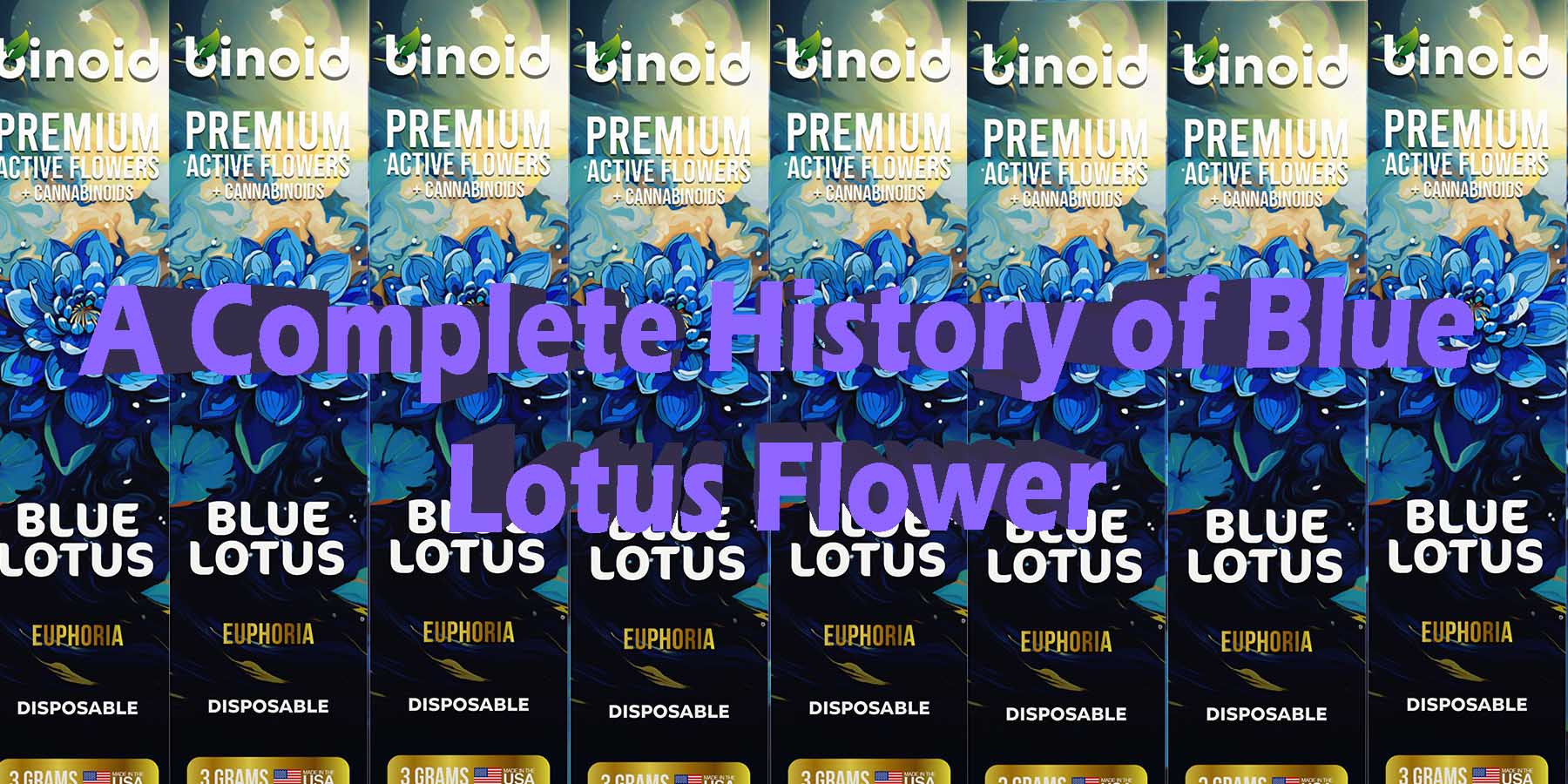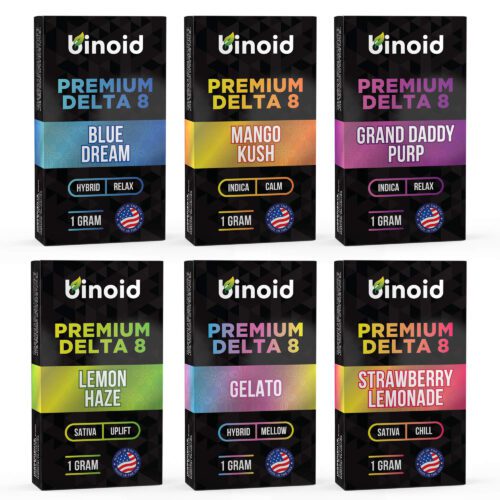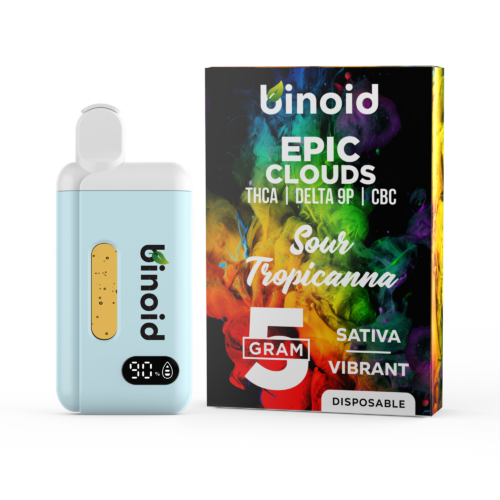
The History of Blue Lotus Flower
Blue lotus flower has been one of the most respected flowers throughout history, coming from Egypt and offering an array of benefits, psychoactive effects, and aromatherapeutic uses since ancient times. Viewed as sacred in many cultures, this aquatic plant has rich symbolism and tradition attached to its name, and we tend to overlook that today, as we primarily buy blue lotus flower to experience its dopamine-boosting effects and its ability to offer us lucid dreams.
Still, knowing the rich history behind blue lotus flower allows us to appreciate it on a deeper level than ever before. So, let’s go back in time for a while, and learn from our ancestors why this is a flower that should be treasured.
To Buy Blue Lotus Products Click Here
The History of Blue Lotus Flower (Nymphaea Caerulea)
Blue lotus is a water lily that belongs to the Nymphaea genus, and while it does grow in parts of Asia, it’s mostly associated with Egypt, where the flower grows easily in an Egyptian climate. Mentioned in the ‘Egyptian Book of the Dead,’ blue lotus was seen as a symbol of life and immortality, and it was believed to enable communication with deceased loved ones as well as deities. Its psychoactive properties, which include sedation, euphoria, and, fascinatingly, the ability to lucid dream, likely played in a role in one’s belief that they could use the flower to communicate with the beyond.
We know that the plant was used in ancient Egypt, because it’s referenced in the Egyptian Book of the Dead, which was written around 50 BC, and its image can be found on papyri dating back to 1500 BC. Some of this papyri mention ancient recipes for medical treatments containing blue lotus. Other papyri show members of sex cults consuming blue lotus-infused wine, which references the plant’s aphrodisiac associations. Another common use for blue lotus was magic, with the plant being used for spells as well as incantations, with the hopes of communicating with Egyptian gods and goddesses.
The aroma of blue lotus flower is intoxicating on its own, so it’s no surprise that ancient Egyptians used the flower for fragrance, as well. Ancient Egyptian art depicts people simply smelling the flower, and its nickname was, “the flower that resembled the sun.”
The Ancient Prestige of Blue Lotus
Blue lotus flower was likely associated with the elite of the time, as ancient art depicts it being used by members of the upper class in ancient Egyptian society. King Tutankhamun’s tomb is decorated with a gold-plated tribute featuring an image of the pharaoh holding the flower. This tells us that the plant was something of a status symbol. Other tombs of prominent members of ancient Egyptian society show similar imagery.
This is historically significant, because we also understand that the plant was used for its psychoactive properties, which tells us that the upper-class and royalty likely enjoyed its intoxicating effects. Not only that, but the plant was used ritualistically in a religious context as well, while images depict them in the hands of priests – high members of society at the time – suggesting that possibly, the plant was a symbol of class, and not accessible to just anyone.
Connection to the Gods
Blue lotus grows in water, and its petals open when the sun rises, closing when the sun sets. This led ancient Egyptians to believe that the flower was controlled by Ra, the sun god, and that added to its sacred associations. It was also viewed as something of a miracle, sent by deities themselves, because the plant is able to grow easily in oxygen-deprived soil found in the bottom of bodies of water, which the Egyptians saw as proof of its spiritual origins.
The plant was also associated with Nefertem – the god of perfume and aromatherapy, who decorated his head with a blue lotus flower. The belief was that Nefertem was born from a blue lotus flower that blossomed out of Nun, the waters of chaos, at the beginning of time. He was lonely, and his tears of sadness spawned the birth of humanity. The belief was that he was born every morning when the petals of the flower opened, and died each night when they closed, to be rebirthed the next day.
Blue Lotus in Other Parts of the World
While we have focused extensively on the plant’s history in Egypt, it’s important to note that it grows in other parts of the world too, including parts of Africa, Asia, and the Middle East. Evidence shows that in Syria, blue lotus flower has also been utilized for at least centuries. There just isn’t as much recorded information about how the plant was utilized in these regions, specifically. It’s safe to assume that its medicinal and psychoactive uses were well-known at the times, and that the plant had spiritual significance in these parts of the world, as well.
Unfortunately, there is no art from these regions of the world depicting blue lotus flowers, either, during the same time period. But, as the flower grows generously along the Nile river, and bodies of water in Asia and the Middle East, its historical use in these areas is undeniable.
Medicinal Uses & Pharmacology – From the Late 1800s Up Until Now
Blue Lotus in smaller doses is a nervine and relaxant. It’s also an outstanding antispasmodic herb for those who have tight or tense muscles, thus permitting energy and vitality to flow at a better pace throughout the body. Blue Lotus flower is both bitter and cooling in nature.
Now, the psychoactive properties of the plant are primarily attributed to two alkaloids:
- Apomorphine is a non-selective dopamine receptor agonist and activates serotonin receptors and α-adrenergic receptors. This alkaloid has been utilized as a sedative and hypnotic to treat a vast scope of conditions like insomnia and anxiety, dating back to the late 1800’s even. It stimulates dopamine receptors and enhances motor function. Hence, why it has been used for those who are suffering from Parkinson’s disease.
- Nuciferine is linked with dopamine receptor blockade. Nuciferine has displayed therapeutic potential as an “anti-psychotic drug”. It also revealed the probability to treat unique vascular diseases where abnormal vasoconstriction is present, implying to its potential as a vasodilator (relaxes blood vessels and arteries).
Due to these actions above, Blue Lotus has long been traditionally used as an aphrodisiac. By easing the mind & body, it can place users in a euphoric-like state. Even today, it’s still a wonderful herb to work with as it pertains to deepening intimacy and connection.
-
Product on sale
 THC-B Vape Cartridge – Juicy Fruit$30.99
THC-B Vape Cartridge – Juicy Fruit$30.99$59.99
Blue Lotus Flower: Its History is Every Bit as Fascinating as its Distinctive Effects
Maybe you’ve never heard of blue lotus flower until now, and you’re intrigued by its promises of euphoria, stress relief, and other fascinating properties. Now, you know that these effects have long been lauded, since ancient times, and that the flower has one of the most fascinating histories out of any plant that grows around the world.
If you’re enthralled by the promises of this flower, spiritually or strictly therapeutic, you will be thrilled to know that blue lotus products (vapes, hemp flower, etc.) are making their way over to Binoid. This way, you can see for yourself why the plant was so highly regarded by ancient Egyptian priests, royalty, and more, and explore its unique properties for yourself.
To Buy Blue Lotus Products Click Here
-
Product on sale
 Binoid Delta 8 THC Vape Cartridges – Bundle$116.99
Binoid Delta 8 THC Vape Cartridges – Bundle$116.99$179.99






